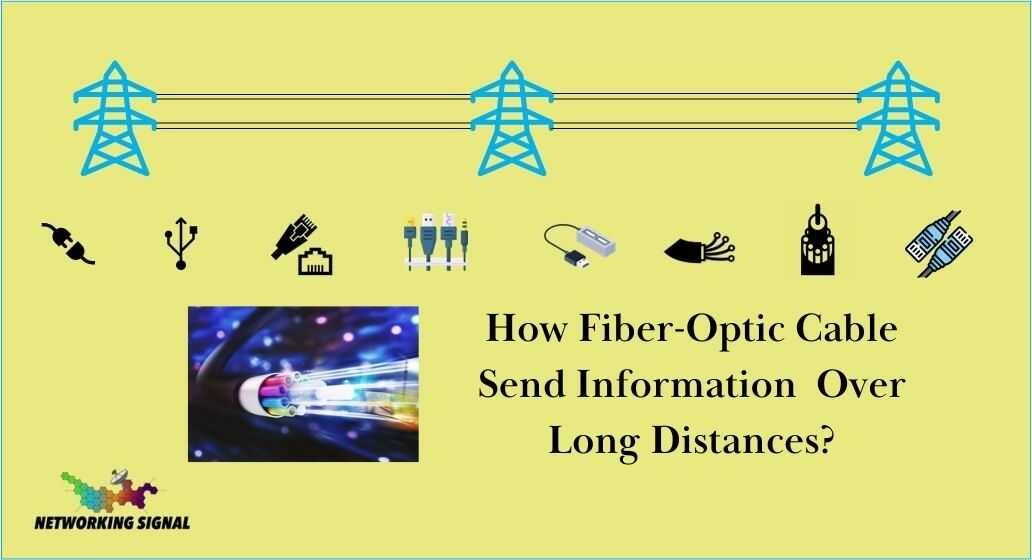Fiber-optic cables have revolutionized telecommunications and networking by allowing information to be transmitted rapidly across vast distances with little signal loss. But how exactly do these hair-thin strands of glass work?
What is a Fiber-Optic Cable?
A fiber-optic cable contains one or more very thin strands of glass or plastic known as optical fibers. Each optical fiber is about the width of a human hair and can carry pulses of light over long distances.
The core of the optical fiber is surrounded by cladding material and a protective outer coating. An optical signal entering one end of the fiber will bounce off the cladding as it travels along the fiber core, a principle known as total internal reflection. This prevents the light from escaping the fiber as it propagates.
Look Here:
How Are Optical Signals Transmitted Through a Fiber?
Fiber optic transmission systems use light from laser or LED sources to represent digital data as optical pulses. These pulses retain their shape and strength over long distances, allowing information to be transmitted thousands of kilometers with very little degradation.
On the sending end, an electronic transmitter converts electrical signals to optical signals. The light pulses then enter the optical fiber and bounce along inside the core.
At the receiving end, a photodetector converts the incoming optical pulses back into electrical signals for processing. Optical amplifiers may also be used at intervals to boost fading light signals.
What Makes Fiber Optics So Fast?
Fiber optic cables can carry information at speeds far exceeding traditional copper wire or coaxial cable. Optical fiber offers a much higher bandwidth, allowing more information to be transmitted per second.
The speed of light traveling in a vacuum is about 300,000 km/s. In glass fiber, light travels at around 200,000 km/s – still extremely fast. This high propagation speed allows fiber optic signals to convey information over long distances almost instantly.
In addition, the total internal reflection within the fiber core allows light pulses to propagate with less attenuation compared to electrical signals on metal wires. This enables optical transmission across longer distances without degradation.
Why Can Fiber Optics Transmit Over Such Long Distances?
Unlike copper cables, fiber optic strands are made of inert glass that is immune to electromagnetic interference and corrosion. Signals stay crisp and clear even over hundreds of kilometers.
Fiber has wide bandwidth so multiple signals can be multiplexed and carried simultaneously over a single fiber. Dense wavelength-division multiplexing (DWDM) enables dozens of separate data channels to traverse the same conduit.
In addition, erbium-doped fiber amplifiers (EDFAs) situated at intervals can detect fading signals and boost them to full strength again. This helps extend the range even further without needing repeaters to electronically regenerate the signals. Fiber optic repeaters work completely optically to amplify the light signals directly when they become too weak over very long distances.
How Much Data Can Fiber Optics Carry?
| Parameter | Copper Cable | Fiber Optic Cable |
|---|---|---|
| Max Speed | 10 Gbps | 1 Tbps |
| Max Distance | 100 m | >100 km |
| Bandwidth | Up to 10 MHz km | Over 50 THz km |
| Attenuation | High | Very low |
| Immunity | Low | Very high |
Modern single-mode fibers used in long-distance telecoms can have bandwidths exceeding 10 terabits per second over a single fiber strand. Multi-fiber cables can carry petabits per second in aggregate capacity.
State-of-the-art fiber transmission systems are evolving to carry up to 1 petabit per second on a single fiber core. This is over 100 times faster than existing high-capacity DWDM optical fiber networks. Experimental systems have even demonstrated petabit speeds over 7000 km distances.
As new optical communications technologies emerge, fiber optic networks will continue increasing their information-carrying potential, cementing their indispensable role in global communications infrastructure. Their nearly limitless capacity is helping fuel the digital revolution.

